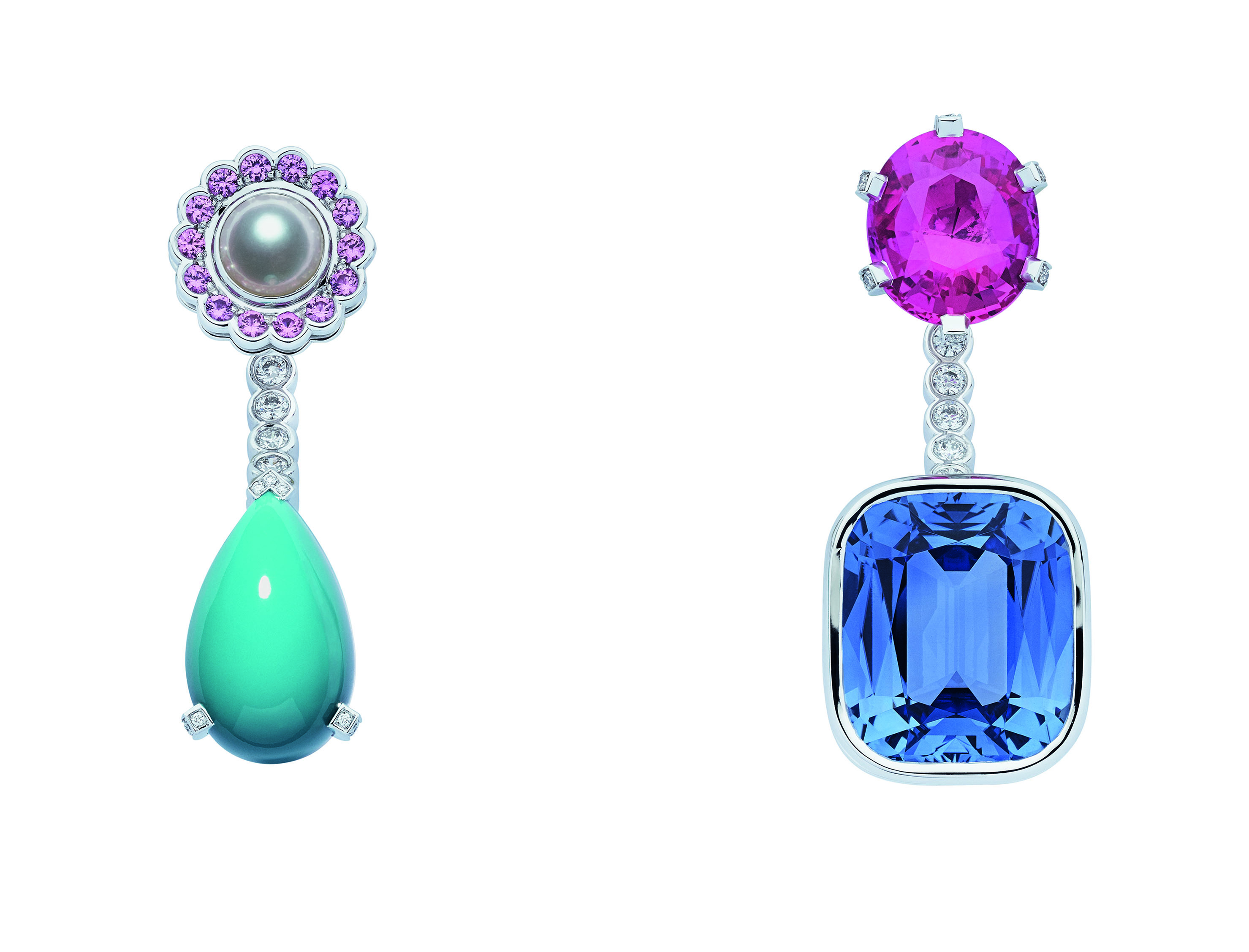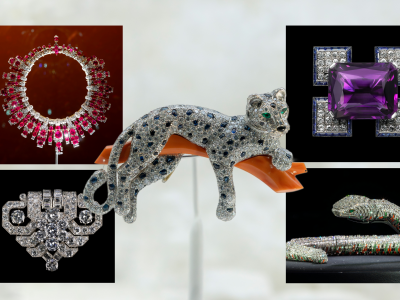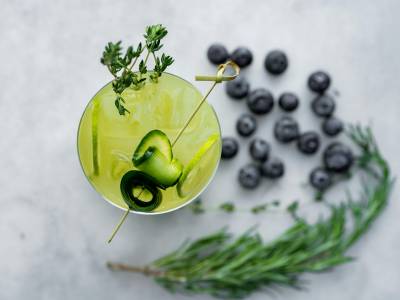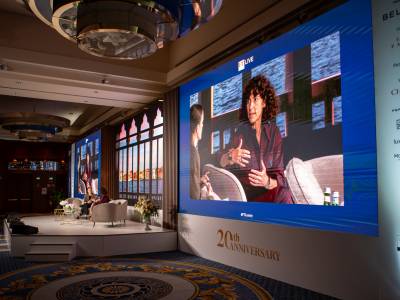What is it about a wonderful piece of high jewellery that induces an irrational rush of desire? Is it a big, flawless gem that, as they say in the trade, “speaks to you”? Or a soaringly lovely design to hold that gem and others, which you can visualise fitting perfectly into your life? For the past decade, important stones have rocketed as investments. Some brands have focused on acquiring the best gems, while others noted long term for design prowess have continued to develop this in more spectacular ways. The happy few combine both, so a brilliantly-designed creation of many stones can include some notably big dazzlers.
Hidden depths: High jewellery’s luxuriantly layered pieces
14th April 2020
From Chanel and Dior to Boodles and Van Cleef & Arpels, see how jewellery houses are using technically challenging techniques to create beautifully complex designs
There is a third factor that, until recently, was not so much ignored as taken for granted. Jewellery-making is an ancient craft involving skills from stone selecting, mounting and setting to polishing and engraving, but they are less attention-grabbing than the stones and design. That is the point — jewellery houses pride themselves on how little metalwork their pieces display, yet it is the world of metal where the jeweller is king, or queen. Now this craft is being placed centre stage. Brands trumpet pieces taking two or three years to complete and the technical challenges they overcome. Hours of work involved are listed so potential buyers can see just how painstaking the creation of high jewellery is.
Jewellery by nature is 3-D, but what better way to show off craftspeople’s talent than with a complex, precious metal structure that is still weightless and lets light through so the stones dazzle? Relief, texture and depth are the words on industry lips and these creations showcase the close collaboration between designers and workshop that depends on the expertise and boldness of both.
There are several reasons for this development. One is the rise of technology and computer-aided design, which allows for increasingly complex and often very precise geometric designs that craftspeople must push boundaries to interpret. Another is that jewellers — especially in the UK — have never been good at blowing their own trumpets, but now, taking a leaf from the successful promotion of hand crafts in other fields and other countries — such as the “Made in Italy” high fashion campaign — heritage jewellery houses are following suit. A third is that high jewellery is not part of the culture of some modern clients, but they become fascinated once the craftwork is explained.
Not that 3-D jewellery is new. Take Van Cleef & Arpels’ famous mystery setting where tiny “tiles” of coloured gemstone are cut with two minuscule grooves underneath and mounted on gold micro-rails, butted together so no metal shows, the colour supernaturally rich. One of the most technically extraordinary pieces in the house’s recent Time, Nature, Love exhibition in Milan was a 1930s necklace in mystery-set rubies and diamonds, which turned this flat technique into a 3-D evocation of draped and folded fabric. The technique still flourishes — the architectural Merli bracelet from the Romeo and Juliet collection represents the battlements of Verona in rubies curved over platinum bosses supported by diamond fans.
In a very different style, Chanel’s Tweed collection is, says the brand, one of the most technically challenging it has ever made. The textured threads that make up its most famous fabric are recreated in strands of engraved
gold, pearls, gold chain, diamonds, onyx and coloured stones, blended with the subtlety of the real thing. A camellia brooch has a textured “tweed” base under a gently convex white gold and diamond fretwork of petals, creating even more complexity.
Boucheron, meanwhile, returns to its iconic Question Mark necklace, but in a newly 3-D way, so that each looks like a living garland of gold and gems. For flowers, ferns, feathers or wheat, creative director Claire Choisne pushes boundaries on shapes and materials — hydrangea flowers in translucent white mother-of-pearl on white gold look frosted, while emerald-pavéd ivy leaves are set on tiny springs that tremble with every movement.
At Dior, colour-loving designer Victoire de Castellane pairs classic gems with modish hardstones, each with a halo of contrasting pavé, and puts them in relief with deep settings lacquered on sides and back in another colour. Independent designer Lydia Courteille creates an equally modern antique style for her Amber Room collection, which layers slices of agate, citrine and hessonite with pops of fire opal and yellow sapphire and tiny engraved gold creatures on a base of coloured titanium, for Baroque pieces that contain a whole story.
Lydia Courteille layers slices of agate, citrine and hessonite with pops of fire opal and yellow sapphire and tiny engraved gold creatures on a base of coloured titanium
The fine ateliers of Paris are not the only workshops with such skills. Taiwanese designer Cindy Chao has her jewels made in various European ateliers, going to the best practitioners for each craft. Her Masterpiece Butterflies take several years to complete and are being designed and worked on, and already reserved by clients, up to 2023. This year’s — just released — is the most 3-D yet and the first made entirely of titanium, which is notoriously hard to work. The wings form a base layer, the metal delicately shaded in blue and encrusted with textured sapphires and diamonds; piled organically on the wings are differently shaped, invisibly-set rose-cut diamonds, while fine, separate veins with yellow diamonds form another layer. The body is textured with four pigeon’s blood Burmese rubies.
Back in London, David Morris plays with highly precise repeating patterns in the Electric Geometric collection. The most exacting is the Hexagon cuff, which took two years to complete. Every six-sided cell with pavé white and pink diamonds layered around a central hexagonal diamond required an extraordinary jigsaw of tiny angles and joints to fit properly — a fusion of high-tech 3-D modelling and the best handcraft. Rivalling it is the Fractal Rose brooch, with three separate layers of white gold with white and pink diamonds bringing modernism to a traditional shape, crowned by a spectacular cushion-cut stone. Graff’s equally geometric Threads collection layers different angular diamonds, mainly baguettes and large emerald-cuts, at conflicting angles in a mind-bendingly complex pattern.
Boodles may be more traditional in approach, but is no stranger to complexity. The Just Beyond the Setting Sun cuff from its Wonderland collection took 400 hours to craft. To an open fretwork of stylised clouds in platinum set with diamonds were added yellow gold sunrays with mainly yellow diamonds, one large yellow diamond representing the sun and a further layer of engraved platinum with diamonds at the base recalling the darkening land. Boodles’ designer Rebecca Hawkins believes every piece should create a story in its owner’s mind. Today’s jewellery with its hidden layers does exactly that.










